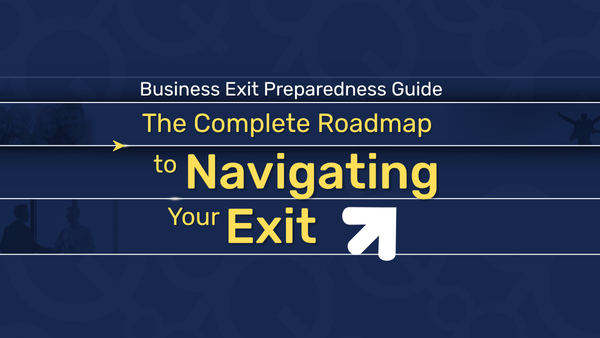The email arrives with a deceptively simple subject line: “Due Diligence Request List.” You open the attachment to find a 15-page document outlining hundreds of items the potential acquirer wants to review—financial statements, customer contracts, employee agreements, technology documentation, corporate records, and much more. They need it all within three weeks, and the clock starts now. Meanwhile, your business still requires your full attention, your team remains largely unaware of the potential acquisition, and you’re wondering how to manage this enormous information request without derailing daily operations.
This scenario plays out in acquisition processes across industries every day. Due diligence—the comprehensive investigation buyers conduct before finalizing an acquisition—represents one of the most intensive and potentially disruptive phases of the sale process. Yet the companies that navigate it most successfully are rarely the ones with perfect operations. Rather, they’re the ones who approach due diligence with strategic preparation and process management.
Having guided hundreds of companies through this intensive examination, we’ve developed a systematic approach that transforms due diligence from a chaotic scramble into a controlled process that actually strengthens your position while maintaining business momentum. Here’s what we’ve learned about preparing your company for buyer scrutiny without sacrificing operational performance.

Step 1: Assess Your Business Readiness Signals
The foundation of due diligence success lies in creating a dedicated team with clear responsibilities while insulating the broader organization from disruption.
Strategic Team Structure Elements:
- Core Coordination Team:
Designate 2-3 people who will serve as the central hub for all due diligence activities, including document collection, buyer communication, and process tracking. - Subject Matter Experts:
Identify internal experts for specific areas (finance, operations, technology, sales) who can provide required information without full-time dedication to the process. - External Advisors:
Engage transaction attorneys, accountants, and M&A advisors who have led similar processes and can anticipate buyer concerns before they arise. - Executive Sponsor:
Ensure one senior leader (often the CEO or CFO) has visibility into the process without becoming consumed by day-to-day details. - Contingency Coverage:
Create backup plans for core team members’ regular responsibilities to prevent operational disruption
This structured approach creates clear accountability while preventing the entire organization from becoming consumed by acquisition-related activities. Companies that implement this team structure typically complete due diligence 30-40% faster than those with ad-hoc approaches, significantly reducing operational disruption.

Step 2: Conduct a Strategic Pre-Due Diligence Audit
The most effective defense against due diligence surprises is a thorough self-assessment conducted before buyer engagement. This proactive approach identifies potential issues while you still have time to address them.
Key Pre-Due Diligence Audit Areas:
- Financial Review:
Examine financial statements for inconsistencies, unusual transactions, or accounting practices that might raise questions. - Contract Compliance:
Verify that key contracts are current, properly executed, and contain no problematic change-of-control provisions. - Corporate Records:
Ensure corporate governance documents are complete, up-to-date, and reflect current ownership and board structures. - Intellectual Property:
Confirm that all IP assets are properly documented, registered where appropriate, and clearly owned by the company. - Employment Matters:
Review employment agreements, compensation structures, and benefit plans for compliance and consistency.
This self-assessment typically reveals 5-10 significant issues that can be addressed before buyer scrutiny begins. Resolving these proactively maintains negotiating leverage and prevents valuation adjustments that often occur when buyers discover problems during their investigation.

Step 3: Create a Strategic Data Room Structure
The virtual data room serves as the central repository for all due diligence information. Its organization significantly impacts both the efficiency of the process and buyers’ perception of your company’s professionalism.
Data Room Best Practices:
- Intuitive Folder Structure:
Organize documents into clearly labeled main categories with logical subcategories that align with how buyers think about the business. - Standardized Naming Conventions:
Implement consistent document naming protocols that include document type, date, and version information. - Executive Summaries:
Create overview documents for each section that provide context and guide buyers through complex information. - Access Controls:
Implement thoughtful permission settings that protect sensitive information until appropriate stages of the process. - Completion Tracking:
Maintain a master document index showing what’s been uploaded and what remains outstanding.
Well-organized data rooms dramatically reduce the number of follow-up questions and requests from buyers. More importantly, they create a positive first impression about your company’s operational discipline—a perception that often carries through to valuation discussion.

Step 4: Prepare Financial Information Strategically
Financial documentation receives the most intense scrutiny during due diligence. Presenting this information strategically—not just accurately—significantly impacts buyer perception and valuation discussions.
Strategic Financial Preparation Approaches:
- Normalized EBITDA Analysis:
Develop a detailed reconciliation showing adjusted earnings with clear, defensible add-backs for non-recurring expenses and owner-specific costs. - Performance Trend Packages:
Create visualizations highlighting positive trends in key metrics, particularly those showing growth and operational improvement. - Customer/Product Analytics:
Prepare analyses showing revenue diversification, customer retention, and unit economics that support the company’s growth story. - Working Capital Analysis:
Proactively analyze historical working capital patterns to establish reasonable expectations for the working capital target in the purchase agreement. - Quality of Earnings Preparation:
Anticipate the areas that will receive greatest scrutiny in a buyer’s QofE review and prepare supporting documentation accordingly.

Step 5: Implement a Systematic Response Process
How you manage the flow of information during due diligence significantly impacts both the efficiency of the process and your team’s ability to maintain operational focus.
Response Management Best Practices:
- Centralized Request Tracking:
Implement a system to log all buyer requests, assign responsibility, track status, and maintain accountability. - Response Prioritization Framework:
Develop clear criteria for prioritizing requests based on importance, complexity, and available resources. - Regular Coordination Meetings:
Conduct brief, focused internal meetings to address bottlenecks and ensure continued progress without excessive time commitment. - Buyer Communication Protocol:
Establish clear channels and response timeframes for buyer interactions to prevent constant interruptions. - Document Review Process: Create a consistent review workflow ensuring all materials are accurate and appropriate before buyer access.

Step 6: Maintain Business Performance During Due Diligence
Perhaps the most challenging aspect of due diligence is maintaining strong business performance during a period of significant behind-the-scenes activity. Yet this is precisely when performance matters most, as buyers closely monitor current results throughout the process.
Operational Continuity Strategies:
- Selective Disclosure Approach:
Develop a tiered information sharing plan that limits full transaction knowledge to those directly involved in the process. - Performance Monitoring System:
Implement enhanced tracking of key performance indicators during the due diligence period to quickly identify any negative trends. - Customer Service Focus:
Double down on customer relationship management to ensure satisfaction metrics remain strong throughout the process. - Leadership Communication Cadence:
Maintain regular team communication and leadership visibility to prevent organizational uncertainty. - Core Team Support:
Provide additional resources and support to due diligence team members to prevent burnout and performance decline.
Companies that maintain or improve their operating performance during due diligence typically complete transactions on more favorable terms than those experiencing performance declines during the process. This operational consistency eliminates the leverage buyers gain when they can point to deteriorating results as a reason to renegotiate terms.
Final Thoughts: Transforming Due Diligence From Ordeal to Opportunity
The most successful companies approach due diligence not as a necessary evil to be endured, but as a strategic opportunity to showcase their operational excellence and organizational discipline. With proper preparation and process management, due diligence can actually strengthen your negotiating position rather than diminish it.
By assembling the right team, conducting pre-due diligence self-assessment, creating an organized data repository, preparing financial information strategically, implementing systematic response processes, and maintaining operational performance, you transform what could be a disruptive ordeal into a controlled process that supports value creation.
While no company is perfect, buyers don’t expect perfection. What they value is transparency, organization, and professionalism in how you present your business—qualities that signal lower integration risk and higher likelihood of future performance. The companies that approach due diligence with this mindset not only achieve better transaction outcomes but also experience significantly less operational disruption throughout the process.
Whether you’re actively pursuing acquisition or simply preparing for future possibilities, implementing these due diligence preparation strategies creates immediate operational benefits while positioning you for success when transaction opportunities arise.







